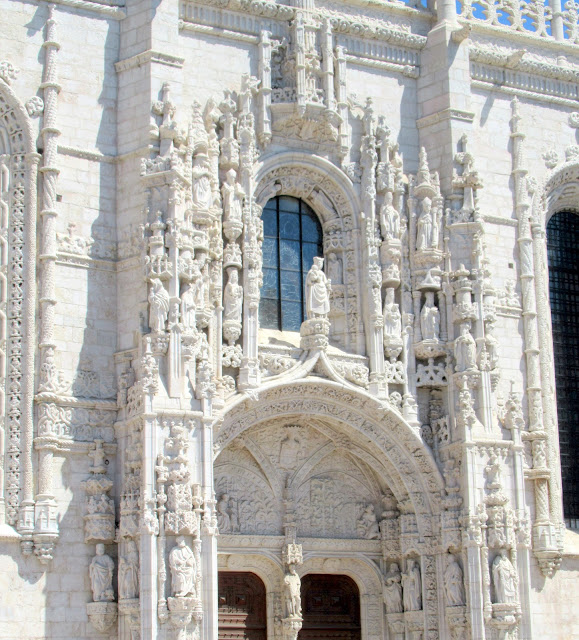Mosteiro dos Jeronimos is the one building that symbolises the Golden Age of the Portuguese discoveries. Now a designated UNESCO World Heritage Site, the monastery and its adjacent church were built to fulfil a promise that Portugal's king Dom Manuel made, should Vasco da Gama return safely from his inaugural voyage to India in 1498. Construction began in 1502 under the architect Diogo de Boitaca.
In 2007, the monastery was once again influential in blessing future trade: the Treaty of Lisbon was signed here to cement the format of the European Union.
The queue at the entrance was long and slow
The fantastically embellished entrance to the church. Crowned by an elaborate medley of statues, including that of the famed Henry the Navigator, the 32-metre-high entrance was designed by the Spaniard Joao de Castilho, who took over the building of the church in 1517. The interior is even more dazzling, displaying the maritime influences typical of Manueline architecture - thee escrutcheons on its ceiling come from the actual ships that sailed the voyages of exploration.
Appropriately, Vasco da Gama's tomb now lies just inside
as does the tomb of Luis de Camoes, considered Portugal's greatest poet and recorder of the discoveries,
Gathered round sumptuously vaulted cloisters with nautical symbols carved into the honey-coloured limestone, the monastery is impressive. You can still see the twelve niches where navigators stopped for confessionals before their voyages until the Hieronymite monks were forced out during the dissolution of 1833.















No comments:
Post a Comment